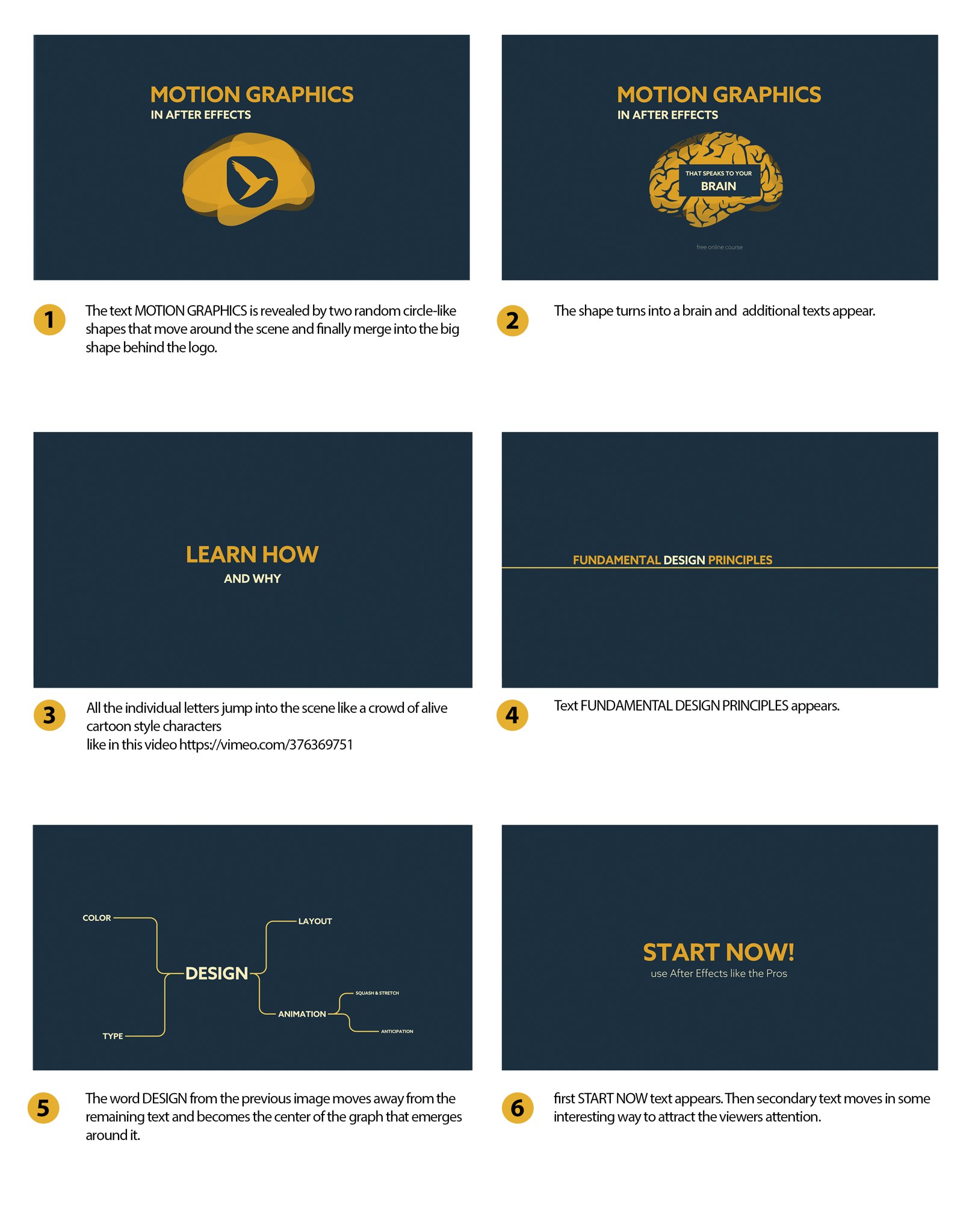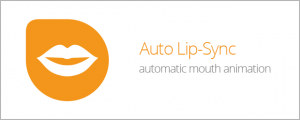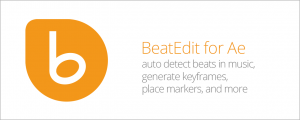Section 1
Storyboards
Storyboards are like a comic book version of your animation and are a great way to check if your story actually works before you start animating. What’s more, after you’ve created the layouts for your scenes, turning them into a storyboard is almost no work. Here’s the storyboard for our video. In addition to the designs for your main scenes, storyboards typically contain little texts that describe how the scenes will be animated. Include any details that are not clear from the still images. You can be very pragmatic here – write down everything that helps the reader to understand your vision of the final result, but keep it compact. If you need ten sentences to explain a cool but complex transition, you should probably add an additional image to your storyboard to visualize it. In our case, we’ve split the first scene into two images to visualize how the brain shape emerges from a series of more abstract shapes.
In addition to the designs for your main scenes, storyboards typically contain little texts that describe how the scenes will be animated. Include any details that are not clear from the still images. You can be very pragmatic here – write down everything that helps the reader to understand your vision of the final result, but keep it compact. If you need ten sentences to explain a cool but complex transition, you should probably add an additional image to your storyboard to visualize it. In our case, we’ve split the first scene into two images to visualize how the brain shape emerges from a series of more abstract shapes.
Creating a storyboard might seem like unnecessary extra work, but it really helps to structure your ideas and be efficient.
Fail Early
A big part of being professional is working effectively, and a key part of this is to ensure you fail early. What does that mean? During your work, you’ll inevitably make bad decisions, whether it’s a part of your story that isn’t really working the way you’re telling it, or that you think is working but your client has something different in mind. It’s a normal part of the process for you to change your mind. You can only be creative if you take risks, so experiment and explore. Don’t be scared to fail, and don’t try to avoid it. But in order to stay efficient, you want this to happen as early as possible.
If you’ve just created a few static layouts, it’s not (so) much work to redo everything and try another approach. But if you’ve already spend days fine-tuning every keyframe before you decide to start over, you’ve wasted a lot of time. It’s normal to fail, but you should fail early. Your storyboards will help you with this. If you work for a client, they’re also an essential tool for making sure you’re implementing the clients’ vision of the project.
Business Tip
If you work for a client, make sure you send them a storyboard and get their approval for it before you start animating.

Create a mouth that automatically animates according to your voice recording.

Auto-detect beats in a music track, wiggle to the beat, write markers,repeat keyframes, stagger layers, and more!

Automatic layouts, snappable guide grids and modifiable shape layer guides - because motion design isn't static.